Exclusive:The Unicorn: Scotland's national animal of strength and nobility celebrated at new Perth Museum
Now Scotland’s high honour for the creature will be told at the new Perth Museum, which opens on Saturday, March 30, in its debut exhibition.
Unicorn will explore the animal’s place in nationhood, including its celebration by the Stuart Kings, who deployed the mythical beast as an emblem of Scottish royalty. It appears usually chained with a crown around its neck.
Advertisement
Hide AdAdvertisement
Hide AdThe exhibition will also explore the unicorn as a modern icon, a popular children’s character and a symbol of the LGBTQI+ movement. My Little Pony, the child’s figurine, will be on show amongst artefacts on loan from around the country, the earliest one dating from the 12th century.
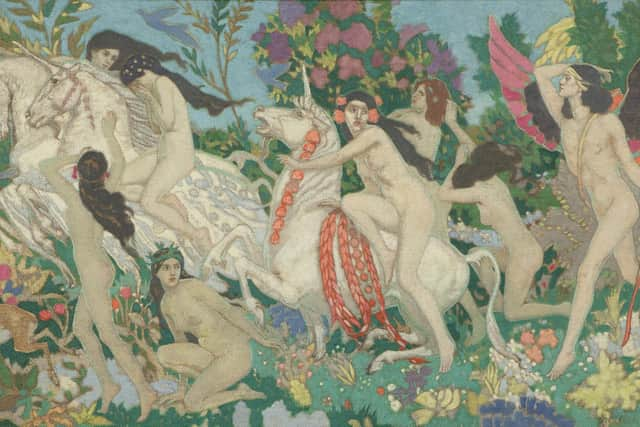

National Museums Scotland (NMS) has loaned three items for Unicorn, all which reinforce the significance of the creature during the Stuart dynasty, those only fit to tame it. Items include a Unicorn coin from the reign of James IV, which would have been minted in Edinburgh and gifted to travelling ambassadors and dignitaries to spend while in Scotland. A boss taken from Linlithgow Palace from the early 17th century, not long after the Union of the Crowns, shows the unicorn, the Saltire and the St George’s Cross together.
Dr Georgia Vullinghs, curator of Renaissance and early modern Scottish history at NMS, said: “James IV, in particular, makes quite extensive use of the unicorn and the objects that we have which have contributed to the exhibition at Perth really emphasise that connection to him.
“There is a global and ancient folklore and mythology around the existence of the unicorn. Especially in Europe, it is associated with chivalric behaviour, it is a symbol of strong military leadership. There is an idea that unicorns are hard to tame, hard to overcome, they are these great mythical beasts.
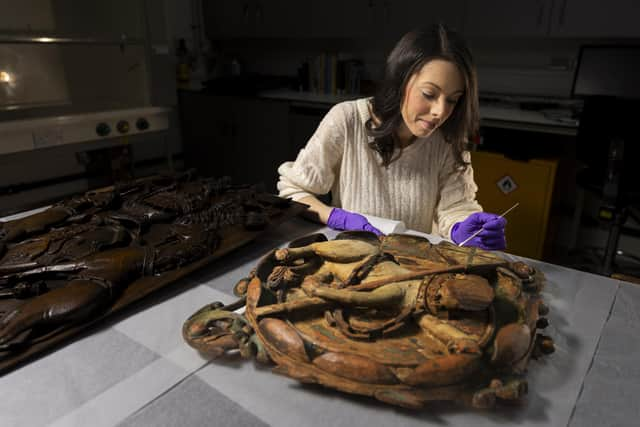

"If you look at the emblem of the unicorn when used in Scotland and used as part of the royal heraldry, it is chained and often it has a crown around its neck. This is where you have the idea that not only does the unicorn represent the monarchy, it is talking about the power of the Stuart monarchy to overcome this great beast. The unicorn is strong, but it is also noble.”
According to NMS, some believe the unicorn was chosen as Scotland's national animal as it was the mortal enemy of the lion, which symbolised England. But this idea doesn’t really take hold until the Union of the Crowns in the 17th century. The ceiling boss on loan to Perth Museum was made shortly afterwards, when James VI of Scotland also became James I of England.
Dr Vullinghs said: “The boss shows a unicorn carrying a very early version of the Union Jack, which shows the St Andrew blue Saltire super imposed on the red St George Cross of England.
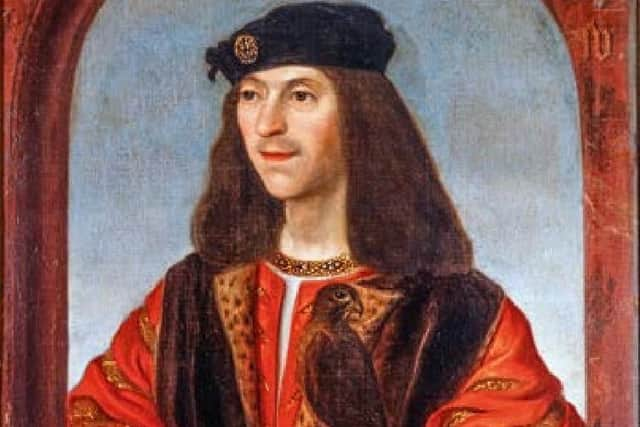

"The unicorn remains a really important emblem of the Scottish side of the monarchy and now we recognise it as being used alongside the lion to hold up the royal arms. It is incorporated into that post union image of the monarchy.
Advertisement
Hide AdAdvertisement
Hide Ad"But this is very much specifically Scottish, especially because the cross of the St Andrew Saltire is in front of the St George Cross, so you might read into that some symbolism that Scotland is not being covered up by the English flag.”
The Unicorn became a frequent sight in Scotland. It bore the arms of Scotland on royal seals and adorned the gold coins issued by James III, his son James IV and his grandson James V.
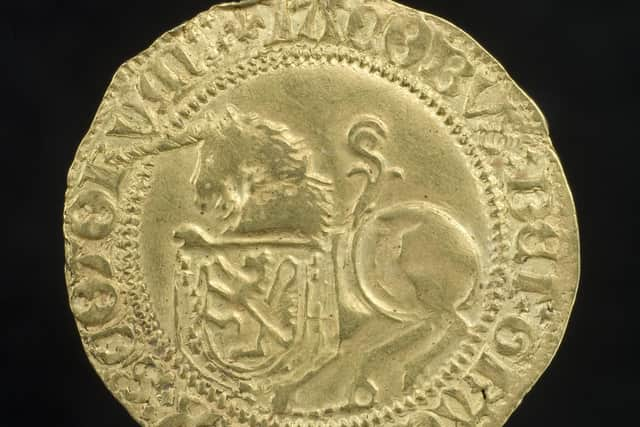

The James IV coin heading to Perth is called a unicorn and was worth 18 shillings Scots.
Dr Vullinghs said: “It seems James IV was using it specifically to give to ambassadors or other foreign dignitaries, who would be given this money to use. It really is a distinctly royal gift and a real symbol of royal power to hand out that money. On this coin, the unicorn and the royal arms stand in for James IV.
“All of these objects are on loan for the Unicorn exhibition at the Perth Museum. It is a wonderful idea for their opening exhibition.”
The unicorn also took its place on monuments across Scotland, such as the Mercat Cross in Edinburgh and Prestonpans and on the façade of Craigmillar Castle. It appeared on a panel in a 16th-century Franciscan Nunnery Chapel in the Overgate, Dundee, which will now go on show in Perth.
The objects on loan from NMS join others from museums and galleries across Scotland, including a include the magical ‘Danny Jewel’, an English Elizabethan pendant jewel of narwhal horn and enamelled gold, usually on display at the Victoria and Albert Museum in London. People once believed the tusk of the dolphin-like narwhal, found in Arctic waters, came from unicorns.
The V&A is also lending an intricately carved narwhal tusk from the early 12th century. It is one of only two known medieval examples with carved decoration of foliage, human figures and serpent-tailed dragons.
Advertisement
Hide AdAdvertisement
Hide Ad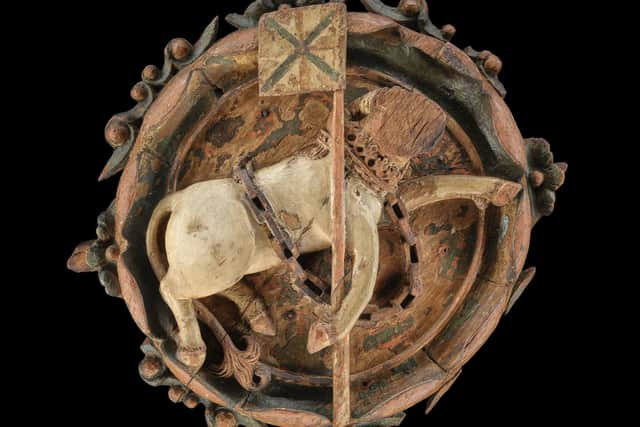

JP Reid, senior new projects officer and curator of Unicorn, Culture Perth and Kinross, said: “From medieval tapestries and oil paintings, to toys, video games and movies, the figure of the unicorn has been a familiar, but shifting cultural icon for over 2,000 years.
"We are thrilled to be able to display a stunning selection of artworks and artefacts, including a series of newly commissioned sculptures. With a long, complex and often contradictory history, the unicorn has been a popular subject for contemporary artists, writers, musicians, filmmakers and activists. It is a symbol through which ideas like authenticity, belief, gender and nationalism can be explored.”
- Unicorn opens Saturday, March 30 at Perth Museum.
Comments
Want to join the conversation? Please or to comment on this article.
